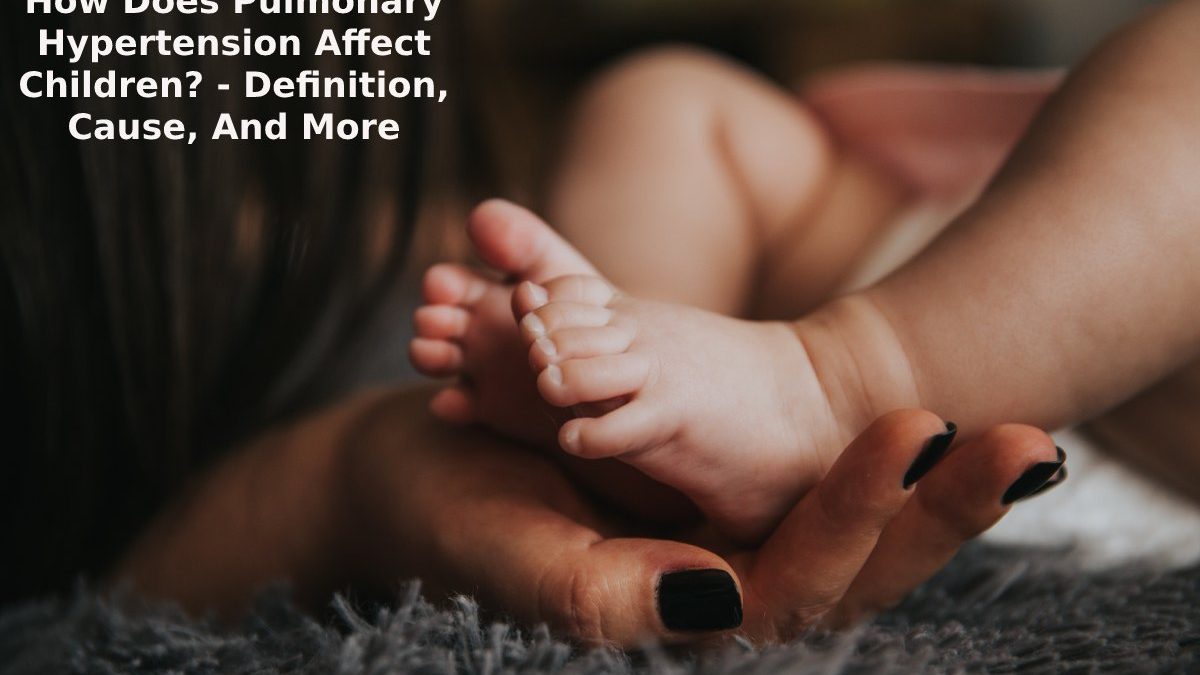Table of Contents
Pulmonary Hypertension – Definition
How does pulmonary Hypertension Affect Children? – Definition, Cause, And More – The pulmonary artery is the large artery that leaves the heart and carries all the deoxygenated blood to the lungs to oxygenated. Pulmonary hypertension increases pressure in this artery, which leads to damage to the lungs and the heart. It can lead to heart failure and right ventricular failure, one of the leading causes of death in patients with pulmonary hypertension.
This medical condition is not exclusive to adults and can occur in children and newborns. Dr Lina María Cacadu, a pediatric cardiologist and master in pulmonary vascular disease, answers seven frequently asked questions that allow us to know how pulmonary hypertension manifests itself in children.
What are the Causes of Pulmonary Hypertension?
Lung hypertension is not a disease but a hemodynamic condition associated with different diseases. In children, the causes may be other than those in adults:
Idiopathic Cause
Congenital heart disease or respiratory problems. For example, a secondary value of taking medications or other diseases like autoimmune, hematological, hepatic, or infectious diseases like HIV.
Is Eisenmenger syndrome Associated with Pulmonary Hypertension?
This syndrome is related to congenital heart disease. When one of these not dried. It can reach an advanced stage that triggers severe and irreversible pulmonary hypertension and, therefore. Changes the functioning and prognosis of congenital heart disease, which surgically corrected.
What are the main symptoms of lung hypertension?
The main symptoms are fatigue or dyspneal, tiredness, or sweating with physical activity. Manifests itself mildly at first and progresses. Infants, for example, fatigued when eating. So a child who used to take ten minutes to drink a bottle will now take one or half an hour. Other symptoms are syncope or fainting while doing physical activity and bluish coloration (cyanosis) in the lips and other body parts.
What are the most common ages at which children present with this condition?
Pulmonary hypertension can occur at any age, from the moment of birth. It is known as persistent pulmonary hypertension of the newborn, which is usually—associated with the development. Transition from intrauterine to extrauterine life. The causes, management and evolution of pulmonary hypertension in newborns and children are very different.
After should I take my child to the doctor?
The first suspicion is clinical according to the common symptoms. and that is what should alert the parents since if the child gets tired or fatigued more than usual and does not have the same performance as before, it should a sign of alarm. A helpful way to find out is to compare it to your physical activity before or to the biological activity of children your age.
For example, if the child used to run and play. He doesn’t run the same gets tired quickly. Or in places like the garden while all children are playing. The child gets tired before everyone else or even faints. This should call attention to the parents, and medical consultation optional that symptoms can gage.
How Is Pulmonary Hypertension Diagnosed in Children?
For the diagnosis, a physical examination will be mandatory. Heart sounds or signs of failure in the right ventricle can make one suspect the presence of pulmonary hypertension. If the medical history and physical examinations indicate a risk of pulmonary hypertension, diagnostic studies such as an echocardiogram, chest x-ray, and electrocardiogram did.
Among these, the echocardiogram is the test that can indicate more precisely if the patient possibly has pulmonary hypertension and what its causes are.
Another test definitively confirms pulmonary hypertension and allows for other hemodynamic measurements: cardiac catheterization. However, it is not the initial test because it is invasive and has its risks. It can do if it becomes necessary after the echocardiogram and complete evaluation.
What Treatment Options are there?
The treatment depends on the cause. If pulmonary hypertension is resolute by sleep apnea. The treatment is not to give medication but to treat the sleep disorder; if the reason is congenital heart disease, the disease should stand treated.
In addition to treating these causes, there are specific medications in some groups of patients that reduce pulmonary pressure. These known as pulmonary vasodilators. There are also intravenous, inhaled. And subcutaneous medications that stand supplied depending on the cause and stage of the patient—the disease starts.
As a high complexity center at the Shabo Clinic. We have a multidisciplinary team of experts in managing pulmonary hypertension to offer our patients diagnostic options and advanced therapies to operate this medical condition comprehensively.
Conclusion
The outlook for pulmonary high blood pressure varies depending on factors.
What’s causing it. How quickly diagnosed. How advanced your symptoms are?
Whether you have another fundamental health condition. The professional in charge of your care will be able to give you the more detailed information. Having pulmonary high blood pressure can affect your ability to carry out ordinary activities. The charity Pulmonic High blood pressure Association UK offers practical information and support for people living with pulmonary High blood pressure and their friends and families.

